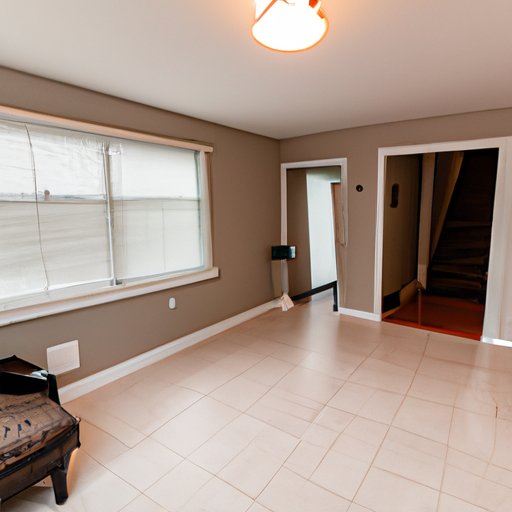Introduction
Real estate photography is an essential part of selling a property. Professional photographs help to showcase a home in the best light, making it more attractive to potential buyers. With the right techniques, a photographer can capture stunning images that will draw attention to the property and help it stand out from the competition.
Overview of Real Estate Photography
Real estate photography is a specialized type of photography that focuses on capturing the interior and exterior of a property for the purpose of advertising it for sale. The goal of real estate photography is to showcase the features and benefits of the home in order to attract potential buyers.
Benefits of Professional Real Estate Photography
According to a survey conducted by the National Association of Realtors, “homes listed with professional photographs sell 32 percent faster than those without.” Professional real estate photography can also increase the perceived value of a property, which can lead to higher offers from potential buyers.

Research the Basics of Real Estate Photography
Before beginning a real estate photography project, it is important to research the basics of the craft. This includes understanding types of shots, angles, and equipment selection.

Types of Shots and Angles
When shooting real estate photography, it is important to understand the different types of shots and angles that can be used to capture the space. Common types of shots include wide angle, detail, and aerial. Wide angle shots are used to capture the entire room, while detail shots focus on specific aspects of the property such as furniture or architectural elements. Aerial shots provide an overview of the property from above.
In addition to types of shots, it is also important to consider angles when shooting real estate photography. Angles can be used to highlight certain features of the property, or to hide flaws. For example, a low angle can be used to make a room appear larger, while a high angle can be used to show off a tall ceiling.
Equipment Selection
Selecting the right equipment is essential for successful real estate photography. Professional photographers typically use DSLR cameras with wide angle lenses. This type of camera allows the photographer to capture large rooms with minimal distortion. Other equipment that may be necessary includes tripods, light stands, reflectors, and flashes.
Prepare the Home
Before taking any photographs, it is important to prepare the home. This includes cleaning the space and rearranging furniture if necessary. It is also important to open all curtains and blinds to allow natural light to enter the room.
Utilize Effective Lighting Techniques
Lighting is one of the most important elements of real estate photography. Natural light is often the best option, as it creates a warm and inviting atmosphere. If natural light is not available, artificial lighting can be used to enhance the space. This may include using flashes, continuous lights, and reflectors to brighten dark areas of the home.
Employ Professional Post-Processing Techniques
Post-processing is an essential step in creating professional real estate photography. Editing photos can help to correct any flaws and enhance the overall image. This may include adjusting the exposure, color balance, sharpness, and contrast. Additionally, post-processing can be used to add special effects such as vignettes and lens flares.
Create a Unique Style
Creating a unique style is key to standing out from other real estate photographers. Differentiating your work can help to draw attention to your images and set you apart from the competition. Some ways to create a unique style include experimenting with different angles, adding text overlays, and utilizing creative editing techniques.

Market Your Real Estate Photography Services
Once you have perfected your skills, it is time to market your real estate photography services. Finding potential clients can be done through networking, online directories, and social media. When selling your services, it is important to emphasize the benefits of professional real estate photography and showcase your portfolio.
Conclusion
Real estate photography is an essential tool for selling properties. With the right techniques and equipment, a photographer can capture stunning images that will help to draw attention to a listing. By researching the basics of the craft, preparing the home, utilizing effective lighting techniques, employing professional post-processing techniques, creating a unique style, and marketing their services, photographers can become successful real estate photographers.
(Note: Is this article not meeting your expectations? Do you have knowledge or insights to share? Unlock new opportunities and expand your reach by joining our authors team. Click Registration to join us and share your expertise with our readers.)
